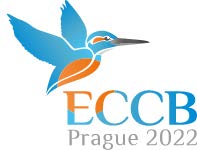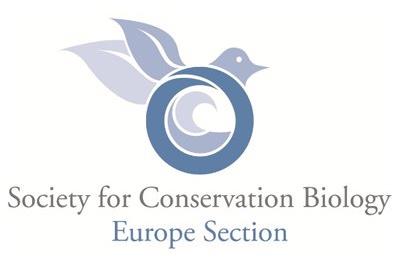Prague Manifesto for Biodiversity Conservation – ECCB 2022
6th European Congress of Conservation Biology
ECCB 2022
“Biodiversity crisis in a changing world”
On August 22-26, 2022, the sixth European Congress of Conservation Biology (ECCB) was convened in Prague, Czech Republic by the Europe Section of the Society for Conservation Biology (SCB). The ECCB 2022 was the largest gathering of conservation scientists in Europe, where over 700 participants came together to address the preservation of biodiversity in Europe and beyond. A key result of the Congress is the following statement calling for immediate action in addressing anthropogenic climate change and mass extinction of biodiversity:
SCB Europe and the participants at ECCB 2022 are deeply concerned with the failure of the current economic and political powers to address the biodiversity and climate crises. The return of war to Europe, blazing hot summer temperatures, raging forest fires and mass extinction are symptoms of society’s failure to transition away from our current unsustainable trajectory. Despite ample warnings and some signs of progress, humanity continues its dependence on fossil fuels and the “business as usual” approach that views nature through a narrow set of economic values. Decision-makers and the public still too often ignore the unequivocal scientific evidence of the magnitude of the crisis and the need for immediate action. Politicians must heed the scientific warnings and societal movements that speak for protecting nature as both a basis for human well-being as well as for the values inherent in Earth’s wonderful biodiversity. We, as SCB members, will continue to work on conserving and restoring biodiversity, help to develop the post-2020 Global Biodiversity Framework and provide critical input to the Convention on Biological Diversity (CBD). We call on decision-makers and citizens everywhere to take an active role in working to address this planetary emergency through adopting evidence-based solutions before it is too late.
Adopted by the majority of ECCB 2022 participants, 26.08.2022, Prague, Czech Republic
Supporting information:
Humans are wholly dependent upon functioning ecosystems and their contributions to our well-being. Paradoxically, ecosystems – both terrestrial and aquatic – are now ubiquitously affected by humans, due to the accelerating anthropogenic climate and mass extinction crises. Biodiversity – the diversity of ecosystems, species, and genes – is the foundation for Earth’s ability to adapt to climate change and other anthropogenic pressures. The mission of the Society for Conservation Biology is “to advance the science and practice of conserving Earth’s biological diversity”.
In Europe and globally, agricultural, forestry and fisheries policies remain highly problematic for biodiversity conservation and restoration1-6, as do urban expansion7 and road sprawl8,9. Human overexploitation of natural resources is an even greater cause of biodiversity loss than is climate change alone, and countries’ economic power does not predict better conservation performance10-12. Although conservation and sustainable use of biodiversity in Europe have had direct support from a number of conventions and EU directives since the 1970s, conservation success remains modest and insufficient, and biodiversity loss has continuously increased in Europe and beyond13,14. In light of the accelerating climate change15 and biodiversity crises16, and addressing the ongoing EU Biodiversity Strategy to 203017 and the Convention on Biological Diversity (CBD) negotiations18, the ECCB 2022 participants stress the critical role of science-based knowledge and collaborations with the wider public, including conservation and other practitioners, indigenous people and local communities in the conservation and restoration of biodiversity.
After 1992-2022, yet another decade with increasing biodiversity loss and no net progress must not be repeated! At this critical juncture in Earth’s history, the challenges are daunting, but the opportunities are there. Conservation scientists can play a pivotal role by providing updated and validated knowledge and by highlighting critical issues6. The latest scientific evidence7,19-23 indicates a dangerous and unprecedented biodiversity decline, with one-third of global protected land being under intense human pressure, while at the global scale at least 44% of the land area need conservation attention24. Scientific evidence also indicates that fulfilling the 2030 Sustainable Development Goal targets will have no significant effect on biodiversity in 78% of the indicator cases, with positive effects on biodiversity in only 7%, and negative effects in 14% of the cases25. With such dilemmas and potentially conflicting issues for policymaking, science-based evaluation, knowledge, and practice is key for reliability and efficacy.
Immediate and sustained action for biodiversity conservation is critical not only in protected areas but also in many other parts of the land- and seascapes26. Key action points include biodiversity sustainability of agriculture, fisheries and forestry, habitat restoration and functional connectivity within and among protected areas, adaptive management, and special interventions for red-listed species and habitats. In addition, science-based efficient monitoring27,28 and evaluation29-33 of such interventions are required. Biodiversity and its conservation and restoration have very positive effects. For example, recent analyses34,35 concluded that actions to halt biodiversity loss generally benefit the climate. An updated review36 concluded that (genetic) variation within species supports critical ecological functions and nature’s contributions to people, but that this hidden genetic diversity is subject to greater loss than species diversity itself.
Conservation scientists also see opportunities16,37,38 and share science-based, relevant advice39. For example, an analysis of 35 species’ conservation plans demonstrated that science-based, stakeholderinclusive, and participatory conservation planning helped reverse the decline of threatened species40. The use of genetic methods can better assess and quantify functional connectivity (gene flow) among local populations41,42 and the efficacy of green and blue infrastructures. Collaboration between scientists and practitioners through “citizen science”43,44 would expand and strengthen monitoring for biodiversity conservation and for enhancing knowledge transfer through collaborative learning45,46. Collaborative research between conservation biologists and indigenous people and local communities can also efficiently widen the knowledge base of conservation and help avoid or resolve conservation conflicts47,48. Such collaborative evaluations and systems analysis can discern key leverage points to guide more efficient interventions49.
SCB Europe stresses the power of science-based knowledge to conserve and restore biodiversity and mitigate climate change. The rapid and massive response to the covid-19 pandemic demonstrated that enormous political will and funding can be mobilized when humans perceive an existential threat50. It is imperative that the climate and biodiversity crises be communicated as such threats. Now is the time to prioritize science-based actions for biodiversity conservation and restoration!
___________________________________________________________________________________________________________________________________________________________________________________________________________________
Exemplifying references and science-based evidence:
- Pe’er and coworkers (2020)
- Selva and coworkers (2020)
- Rouillard and coworkers (2018)
- Hermoso and coworkers (2022)
- Kadoya and coworkers (2022)
- Pullin and coworkers (2009)
- McDonald and coworkers (2019)
- Kati and coworkers (2022)
- Ibisch and coworkers (2016)
- Andermann and coworkers (2020)
- Rodrigues and coworkers (2014) Fig.3
- IUCN (2014)
- https://www.eea.europa.eu/soer/2020
- Ceballos and coworkers (2017)
- IPCC (2022)
- IPBES (2020)
- Biodiversity Strategy 2030
- https://www.cbd.int/conferences/post2020
- Jones and coworkers (2018)
- Chase and coworkers (2020)
- Williams and coworkers (2022)
- Harfoot and coworkers (2021)
- Borgelt and coworkers (2022)
- Allan and coworkers (2022)
- Zeng and coworkers (2020)
- Crist and coworkers (2021)
- Fraixedas and coworkers (2022)
- Hoban and coworkers (2021)
- Mahajan and coworkers (2019)
- Lees and coworkers (2021)
- Pullin and Knight (2009)
- www.conservationevidence.com
- www.environmentalevidence.org
- Shin and coworkers (2021)
- Jung and coworkers (2021)
- Des Roches and coworkers (2021)
- Taylor and coworkers (2017)
- Cvitanovic and Hobday (2018)
- Perino and coworkers (2021)
- Lees and coworkers (2021)
- Plue and coworkers (2019)
- Klinga and coworkers (2019)
- https://www.biodiversa.org/1814
- Vohland and coworkers (2021)
- Daniels and Walker (1996)
- Tinch and coworkers (2016)
- IPBES (2019)
- Molnár and coworkers (2021)
- Riechers and coworkers (2021)
- Andrijevic and coworkers (2020)

